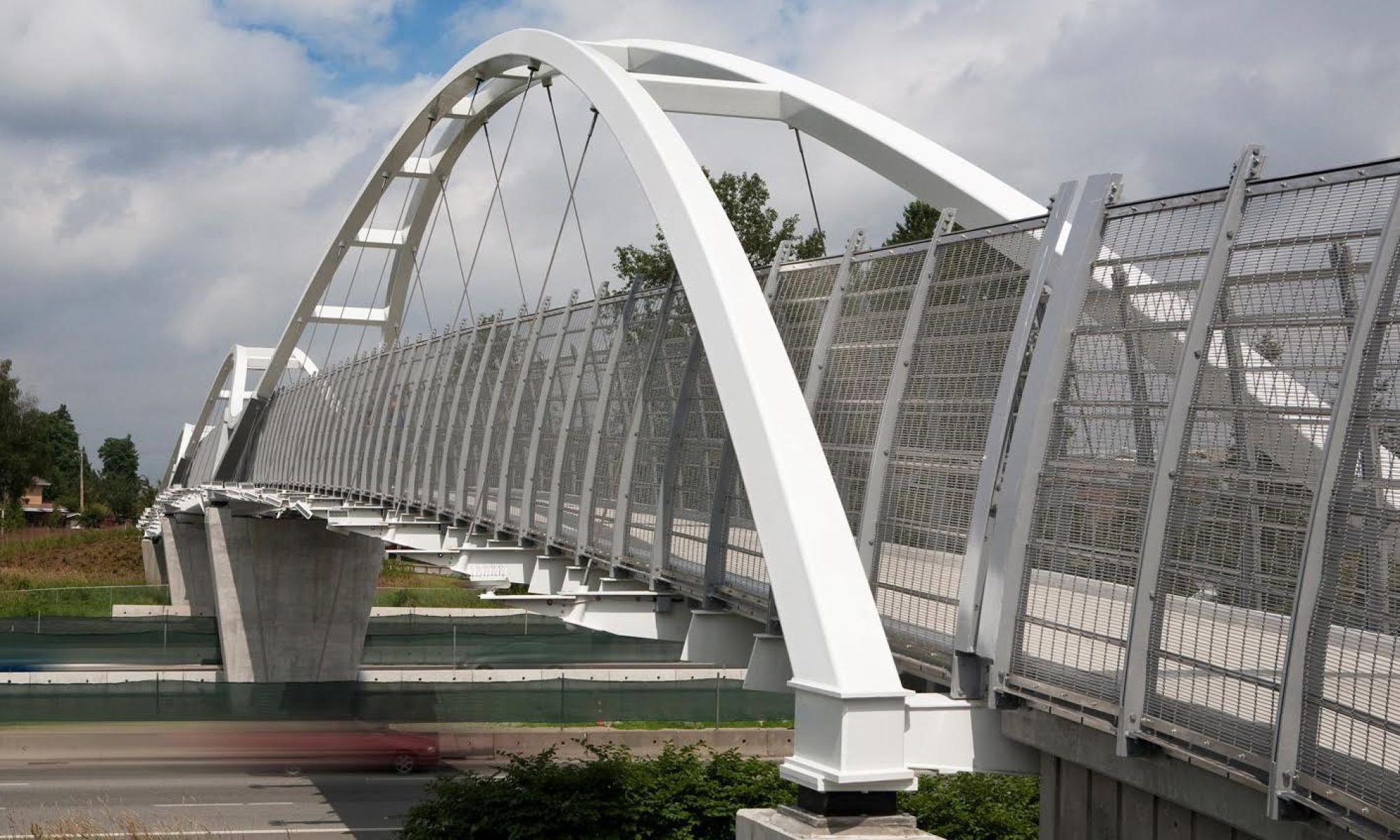Introduction
The design of below grade building foundation/retaining walls (referred to as basement walls herein) for earthquake lateral soil pressures has evolved over the years. A typical approach in 1995 was to use Mononobe-Okabe (M-O) earthquake soil pressures with a load factor of 1.0.
In the 2005 National Building Code of Canada (NBCC) the peak ground acceleration (PGA) for the Vancouver region went from about 0.23g to about 0.46g, and resulted in M-O earthquake soil pressures that were over 2.5 times larger than those calculated using the 1995 NBCC. This had a significant impact on the design of concrete basement walls, particularly on shear forces and flexural reinforcement in the upper lifts.
However, there was little evidence from the field of earthquake failures of these below grade walls supported by floor slabs. In addition, research in the United States (see Literature Review in the thesis referenced below) indicated that soil pressures due to earthquakes predicted by the M-O procedure were conservative, and the soil design pressures could be reduced based on the performance of the walls. However, the design practice in the U.S. for foundation walls typically uses different assumptions than those used in Canada (more conservative load factors and soil pressures) and conclusions drawn from U.S. research may not apply directly to the Canadian design context.
This prompted the Structural Engineers of British Columbia (SEABC) to form a committee in 2008 to look at whether an alternate design approach using reduced soil design pressures could be developed that produced a wall design that had performance characteristics that were consistent with the seismic design of the rest of the building and other foundation design approaches such as those used for liquefaction induced ground displacements.
The Civil Engineering department at the University of British Columbia (UBC) was interested in this topic and undertook an extensive non-linear analysis study of the problem (using a suite of earthquake records) that involved several students and professors and lasted several years. This resulted in the publication of several papers, conference articles, and a PhD. thesis. These documents were reviewed by the committee with the aim of developing a set of recommendations for local practitioners. Sadly, committee Chair Dr. Ron DeVall and committee member Jim Mutrie each passed away before the recommendations were able to be finalized as a practice guideline. Nonetheless, a great deal of valuable research was produced and documented in the articles and thesis. These documents are referenced below, for interested SEABC members to review.
Committee Members
UBC Civil Engineering
- Liam Finn, PhD, P.Eng. – Geotechnical
- Peter Byrne, PhD, P.Eng. – Geotechnical
- Mahdi Taeibat, PhD, P.Eng. – Geotechnical
- Elnaz Amirzehni, PhD – Geotechnical
- Don Anderson, PhD, P.Eng. – Structural
- Carlos Ventura, PhD, P.Eng. – Structural
- Perry Adebar, PhD, P.Eng. – Structural
Geotechnical Engineers
- Ernie Naesgaard, PhD, P.Eng. – Naesgaard-Amini Geotechnical Ltd.
- Ali Amini, PhD, P.Eng. – Naesgaard-Amini Geotechnical Ltd.
- Matt Kokan, MASc, P.Eng. – GeoPacific Consultants Ltd.
- Doug Wallis, MASc, P.Eng. – Levelton Consultants Ltd. / WSP Global
Structural Engineers
- Ron DeVall, PhD, P.Eng. – Read Jones Christoffersen Ltd. (Chair)
- Jim Mutrie, P.Eng.
- Rob Simpson, MASc, P.Eng., Struct.Eng. – Glotman Simpson
- Andrew Seeton, MASc, P.Eng. – Glotman Simpson
Published Articles
Amirzehni, E., Taiebat, M., Finn, W. D. L., and DeVall, R. H., (2015) “Seismic performance of deep basement walls”, Proceedings of the Sixth International Conference on Earthquake Geotechnical Engineering. Christchurch, New Zealand, p. Paper ID: 194, 8 pages.
Amirzehni, E., Taiebat, M., Finn, W. D. L., and DeVall, R. H., (2015). “Ground motion scaling/matching for nonlinear dynamic analysis of basement walls”, Proceedings of the Eleventh Canadian Conference on Earthquake Engineering. Victoria, BC, Canada, 10 pages.
M. Taiebat, Amirzehni, E., and Finn, W. D. L., (2014). “Seismic design of basement walls: evaluation of the current practice in British Columbia”, Canadian Geotechnical Journal, vol. 51, no. 9, pp. 1004-1020.
Amirzehni, E., Taiebat, M., Finn, W. D. L., and DeVall, R. H., (2013). “Effect of near-fault ground motions on seismic response of deep basement walls”, Proceedings of the Fourth International Conference on Computational Methods in Structural Dynamics & Earthquake Engineering (COMPDYN 2013), Kos Island, Greece, 11 pages.
Taiebat, M., Finn, W. D. L., Ahmadnia, A., Amirzehni, E., and Ventura, C. E., (2013). “Seismic evaluation of existing basement walls”, in Computational Methods in Earthquake Engineering, vol. 30 of Computational Methods in Applied Sciences, M. Papadrakakis, Fragiadakis, M., and Plevris, V. Netherlands: Springer, pp. 177-196.
M. Taiebat, Ahmadnia, A., Finn, W. D. L., Ventura, C. E., Naesgaard, E., and DeVall, R. H., (2011). “Seismic assessment of basement walls for different design criteria.”, Proceedings of the Fourteenth Pan-American Conference on Soil Mechanics and Geotechnical Engineering & Sixty Fourth Canadian Geotechnical Conference. Toronto, Ontario, Canada, p. 7 pages.
PhD. Thesis
“Seismic Assessment of Basement Walls in British Columbia” By Dr. Elnaz Amerzehni
Download at: https://open.library.ubc.ca/media/download/pdf/24/1.0300247/4/1356
The work that was started in 2008 with an initial analysis with FLAC by Ernie Naesgaard was taken over by UBC professors and students. Work continued and as it went along several papers were produced. The culmination of the work is the extensive work done by Dr. Amirzehni and it is the basis for the thesis. The thesis incorporates the work in the papers but provides much more detail.

